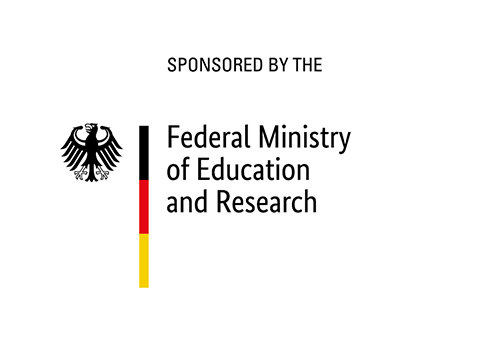Holistic Chitin conversion to materials for 3D printing application and performance animal feed additives.
ChitoMat – Holistic Chitin conversion to materials for 3D printing application and performance animal feed additives
Challenges
The substitution of petrol-based materials by renewable alternatives is one of the major challenges of the chemical industry. Especially in the field of polymers the demand for bio-based solutions is constantly growing. PLA, PHB and cellulose are the most industrially applied bio-polymers to date. However, underperformance of bio-based materials especially for 3D printing, in combination with high market prices, compared to fossil based alternatives, prevent their market penetration. Therefore, novel cheap and performing bio-based polymers have to be developed. Interestingly chitin, the second most abundant biopolymer on earth, has the potential to solve this challenge. It can be sourced from fungi, insects and crustacean shells. The processing of crustaceans (e.g. shrimps, crabs, lobster) solely in Canada resulted in more than 130.000 tons of shell waste containing 33.000 tons of chitin in 2016. The processing of crustaceans (e.g. shrimps and crabs) in the EU alone results in more than ~750.000 t/a of shell waste and must therefore be considered as a significant bio-waste stream. Prime producing countries are the Netherlands, Ireland, Denmark, Norway, Germany, the UK and Iceland. Currently, this marine bio-waste has to be disposed of in landfills at costs of approximately 7500 €/t, which is neither an economically nor an environmentally sound strategy.
Objectives and project plan
The low price for this by-product of the fishery and food industry in combination with its natural properties biodegradability, biocompatibility, non-toxicity and anti-microbial activity make it an ideal starting point especially for materials in medicine and pharmacy as well as feed additives. Unfortunately, in its natural non-functionalized form, chitin shows no glass transition point and is degraded at temperatures at 280 °C, rendering it unusable for thermoplastic material application. Next to efficient and economic processes for chitin supply, the decisive step for the utilization of chitin in the bio-economy, are therefore efficient methods for its selective functionalization to transform fishery waste into a novel thermoplastic bio-polymer as well as appropriate formulations to transmit its antimicrobial properties into functional feed additives.
Impact
Thermoplastically processable chitin derivatives offer the possibility of using a large amount of waste stream from the fishing industry for the production of new materials. The aim of the project is to develop modified polysaccharides which, comparable to cellulose acetate, can replace fossil-based materials.
Project information
Project title
ChitoMat – Holistic Chitin conversion to materials for 3D printing application and performance animal feed additives
Project duration
July 2019 – June 2022
Project partners
- Technische Universität München (TUM)
- University of Prince Edward Island, Atlantic Veterinary College, Canada
- University of Prince Edward Island, Atlantic Biofabrication Laboratory, Canada
- BBSI Canada Ltd, Canada
Funding
We would like to thank the German Federal Ministry of Education and Research (BMBF) for funding the project "Chitomat", promotional reference 13XP5037B, in the "Bioeconomy International 2018" program.

 Fraunhofer Institute for Interfacial Engineering and Biotechnology IGB
Fraunhofer Institute for Interfacial Engineering and Biotechnology IGB